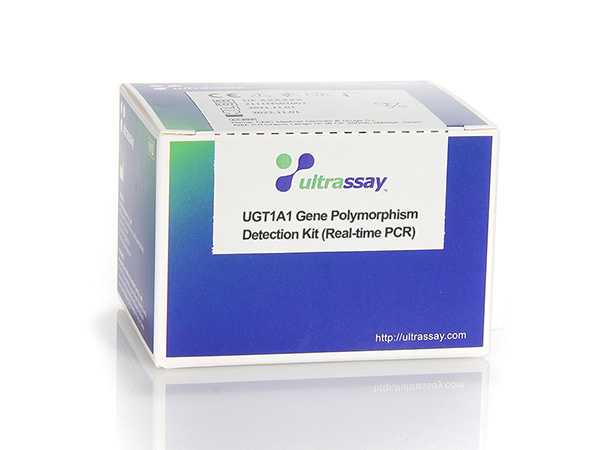Uridine diphosphate glucuronosyltransferase encoded by UGT1A1 gene is an important enzyme that detoxifies many endogenous and exogenous substances and enhances their excretion. The UGT genes are divided into two major classes, UGT1 and UGT2, and research shows that genetic polymorphisms of UGT1 gene is clinically important in mitigating the toxic effects of drugs. Irinotecan (CPT-11), a DNA topoisomerase I inhibitor, is an inactive precursor drug that needs to be converted to active metabolite SN-38 by activation of hydroxylate esterase to be effective. SN-38 is mainly metabolized by UGT1A1, UGT1A7 and UGT1A9 to produce SN-38G. Gene polymorphisms of UGT1A1 enzymes affect enzyme activity, and the decrease in enzyme activity can lead to other toxicities such as diarrhea or neutropenia triggered by SN-38 that accumulates in the body.
UGT1A1*6 is mutated at codon 71 (G71R), which results in a reduction of enzyme activity to 30%-49% of the wild type. Its mutation frequency is about 13% in East Asian populations (Japan, Korea and China). When UGT1A1*6 has the AG genotype and AA genotype, it leads to a lower resistance of patients to irinotecan drug toxicities. The UGT1A1*28 gene promoter region TA sequence is repeated multiple times, where the pure wild type is (TA)6/(TA)6 and the common mutation is the (TA)7 allele. Carriers of the mutant (TA)7 allele are significantly more likely to develop grade 3 diarrhea when taking irinotecan at normal doses. Patients with the (TA)7/(TA)7 genotype, in particular, are more likely to experience adverse reactions. Irinotecan should be used at reduced doses in patients with non-wild-type genotypes. This kit is only used to detect the target gene sequences of specific tumor patients, and the detection results are for clinical reference only, and should not be used as the sole basis for individualized treatment of patients. Clinicians should comprehensively judge the detection results based on the patient’s condition, drug indications, treatment response and other laboratory detection indicators.
The principle used in UltraDx UGT1A1 Gene Polymorphism Detection Kit is fluorescence PCR method initiated by pyrophosphorolysis. The specific principle is that in the presence of pyrophosphoric acid, Taq DNA polymerase can catalyze the reverse reaction of DNA synthesis, and template-dependent DNA degradation occurs from the 3′ end, that is, pyrophosphorolysis. When the labeled primer degrades, it can generate fluorescence, and after degrading the 3′ terminal base, the probe can be used as a primer to participate in PCR amplification.
In this kit, the internal control (IC) detection system is designed to analyze the reasons when the test fails. The internal control system and polymorphism detection system are located in the same tube. In order to avoid the mutual influence of fluorescent signals, fluorescent groups with different emission wavelengths are used for polymorphism detection and internal control detection respectively, and HEX fluorescent group is used for UGT1A1*6 polymorphism detection. UGT1A1*28 polymorphism was detected by FAM fluorescent group. Texas Red fluorescent group is used for internal control.
Applicable sample type: EDTA whole blood.
Applied Biosystems™ Real time PCR system 7500, ABI QuantStudio™5 Real-time PCR system, LightCycler® 480 PCR system, Bio-Rad CFX96 real-time PCR instrument. Ultrassay eQ9600 Real Time qPCR System etc.



